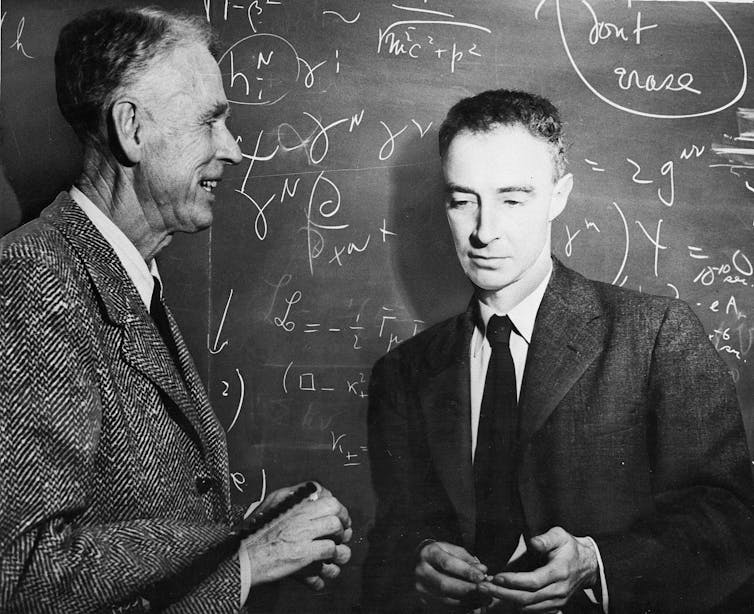PARASITES IN THE NEWSPrince Harry's Silicon Valley startup to lay off workers as he and Meghan try to 'reinvent' themselves: reports
2023/08/04

Prince Harry, Duke of Sussex, and Meghan, Duchess of Sussex, arrive at the Robert F. Kennedy Human Rights Ripple of Hope Award Gala at the Hilton Midtown in New York on Dec. 6, 2022.
- Angela Weiss/GETTY IMAGES NORTH AMERICA/TNS
Over the last week, Prince Harry and his wife, Meghan Markle, have returned to the spotlight in an effort to reportedly "reinvent themselves" and prove to the world that they're not "grifters" who need to exploit their fraught connections to the British family to keep people's attention and maintain their wealthy, A-list lifestyle.
But they hit a possible snag with the news Thursday that one of Harry's projects, the San Francisco-based mental health startup, BetterUp, "missed its financial targets" last year and needs to lay off 16% of its workforce, or some 100 employees. The Daily Beast cited multiple sources within the company to report Thursday that the company, which provides "mental fitness" services to corporate clients, has been dealing with "internal tumult" for many months, including "a revolt" in 2022 by its army of coaches over pay cuts and other professional issues.
It appears that Harry still has his lucrative job with BetterUp as its "chief impact officer," and is still listed at the top of BetterUp's leadership team. The company has never offered details about what the Duke of Sussex does in his role, how much he is paid or how much time he puts in. He has given interviews for BetterUp on the importance of maintaining mental health and appeared in March with CEO Alexi Robichaux at the company's Uplift summit. In interviews, Robichaux has vaguely said that Harry's role is to expand BetterUp's "global community reach," while the duke has said his job involves "driving advocacy and awareness for mental fitness."
The Daily Beast said BetterUp, and a spokesperson for Harry did not immediately respond to a request for comment on the layoffs. BetterUp has yet to respond to requests for comment from this news organization. The company, which has offices in San Francisco, Austin, Texas, Washington DC, London and Amsterdam, has not filed WARN notices with California's Employment Development Department, a spokesperson for the agency said.
It's likely Harry has been paid quite a bit for his "advocacy" for BetterUp, given that the company raised $300 million at a $4.7 billion valuation in 2021, the Daily Beast reported last year. But the lack of clarity around Harry's job description irked some of BetterUp's coaches, who questioned whether his job was simply marketing "smoke and mirrors," the Daily Beast also reported.
Unfortunately for Harry, his role with BetterUp has fit the narrative that he's cashed in on high-profile partnerships without working too hard. This narrative spun into overdrive with the collapse of Harry and Meghan's $20 million deal with Spotify, which laid off 6% of its workforce earlier in the year. In June, Spotify and the Sussexes revealed that they were parting ways, with reports saying that the streaming service was frustrated over the couple's failure to produce much content in nearly three years. Some podcasters, who turn out multiple podcasts monthly or even weekly, were particularly incensed that the Montecito millionaires only managed to produce 12 episodes of Meghan's Archetypes podcast since late 2020.
One of those podcasters was Spotify executive and veteran sports writer Bill Simmons, who called them "(expletive) grifters." The New York Post also labeled the Sussexes "Their Royal Laziness." Critics pointed out that they were paid a reported $100 million by Netflix, but have thus far only launched their popular six-part documentary series about themselves, in which the couple complained about royal life and dished about Harry's famous relatives. This week, the Sussexes tried to push back against the "grifters" and "laziness" labels, with a "source" close to their Archewell production company suggesting to People magazine that they were poorly onboarded by Spotify, saying, "They were given no formal lay of the land to kick things off, so they were already on unsteady footing even before the ink was dry."
The sympathetic People story also made it clear that they are hoping to "banish memories of the lengthy pity party they held after leaving the royal family — and fight their way back into the hearts of the American public," the Daily Beast's royal correspondent Tom Sykes reported on Friday.
Branding and public relations experts have said the couple need to shift away from emphasizing their royal connections and instead remind people of their aim to be social activists, which may explain the release of an Archewell Foundation video in which the Sussexes make phone calls to young people to tell them that they are recipients of The Responsible Technology Youth Power Fund. The video marked the first time that Harry and Meghan had been seen together since May, when they were accused of exaggerating the dangers of being followed by paparazzi in New York City to garner global headlines and sympathy.
Page Six said the couple probably wore coordinating camel outfits in the video to dispel rumors that their marriage is in trouble. In any case, the video showed the Sussexes sitting together on a bench in an elegant California garden — perhaps their own — as they made those phone calls and congratulated recipients for their "groundbreaking approach" to making the online world "more inclusive, equitable and accountable." It's notable that the video wrapped with the recipients clapping and looking giddy about receiving calls from Harry and Meghan.
Archewell Foundation, founded by Prince Harry & Meghan, The Duke & Duchess of Sussex, continues to drive it's mission
Their three main pillars of focus are to build a better world online, to restore trust in information, and above all, to uplift communities.
The Daily Beast's Sykes said that Harry would try to shift perceptions of himself by finally releasing his Netflix documentary series, "Heart of Invictus," about the groundbreaking Paralympic style event for wounded veterans that he founded a decade ago. It's not known yet when the series will air, but Harry is due to headline at the Invictus Games, which kick off in Dusseldorf on Sept. 9. Meghan also might be there.
For Harry, a lot is "riding" on this Netflix series, Sykes said. "If it is a hit, it will banish forever the accusation that the couple are only of interest when spilling tea on Harry's family," Sykes said. It could also give Harry a chance to "highlight the empathy, charm and sincerity which people who have actually worked with Harry often cite."
"If, however, it's a worthy but dull documentary, it could spell big trouble for the couple's oft-stated goal of making a change in the world through the power of compassion, which, let's face it, has always been a somewhat nebulous proposition," Sykes wrote. The couple's attempts to champion compassion also has been "seriously undermined by their attacks on the royal family," especially as the attacks came when Harry's grandparents, the late Queen Elizabeth II and Prince Philip, were dying, Sykes said.
Nonetheless, a kinder, gentler approach to Harry's family and an effort to promote projects that market "inspiration, compassion and hope" could be one way for the couple to reinvent themselves, according to Sykes. Harry could pitch in by continuing to promote the importance of mental health through his work with BetterUp. But, Sykes also said: "The critical test will be whether the public are interested in buying their more wholesome wares."
© The Mercury News






 Grandmaster Flash performs during his
Grandmaster Flash performs during his
















